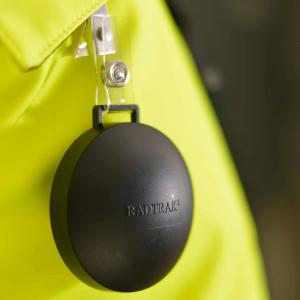Radonova Announces Release of Expanded Personal Radon Dosimetry Service that Now Calculates Accumulated Annual Exposure
New reporting calculations of worker radon exposure can help employers summarize radon dosimetry studies faster and more efficiently
Personal radon dosimetry is the practice of measuring radon exposure incurred by each worker during their shifts. It enables organizations to track radon exposure of each employee while at work which can then be calculated into an accumulated annual exposure. Results can be compared to hygienic limit values and actions can then be taken to reduce individual on-the-job radon exposure. High levels of radon and long-term radon exposure increase workers’ chances of developing lung cancer.
Radon dosimetry is mainly used in mines, caves, dams, and underground facilities where radon levels are often high. Radon gas is a decomposition product of uranium that is commonly found in the earth's crust. Therefore, radon content is significantly higher in and below ground level, when compared to the air above ground.
How Radon Dosimetry Works
The employee wears the dosimeter, attached to their clothing, during the workday. At the end of each workday, the employee removes the dosimeter and stores it in a room or locker where continuous radon measurement is taking place with a background radon detector. Exposure to the worker is then obtained by subtracting the radon exposure contribution in the storage place that is measured with a background detector from the personal dosimeter measurement.
Workplaces first decide how many workers are to be measured. Radonova will then provide dosimeters that are alpha track radon detectors. These are attached to work clothes with a name badge type clip holder. Each worker follows the following steps:
Beginning of each workday
• Arrive at work
• Clip radon dosimeter to work clothing and record the time
• Wear the dosimeter during the entire workday and do not remove until end of the workday
End of each workday
• Before leaving, remove radon dosimeter and leave in a storage room, dressing room, or work locker (preferably the same location each time)
• Record the time to document how long dosimeter has been worn that day
A typical analysis period is over a quarter. The dosimeter and background detectors are sent back to Radonova for measurement. A report will be released within two weeks. It will contain both the exposure for the time and the year's accumulated exposure calculation. These results can then be compared to safe national limit values. Before commencing a radon dosimetry project for individual employees, it is highly recommended to conduct a radon measurement of the workplace.
Background Radon and Area Measurement
A background measurement must also take place where the dosimeter is stored during non-working hours. The exposure measured by the background radon detector is subtracted from the exposure measured with the dosimeter. By doing this, the laboratory can calculate the actual exposure an individual is subjected to during working hours. The background detector should always be stored in a room with a low radon level. It should not be above 1.85 pCi/L or 50 Bq/m³. Therefore, to gain an accurate measurement it is crucial to determine radon concentration levels in the area where background radon detectors are stored.
It is also recommended that area radon measurements be conducted continuously in locations where employees work. By obtaining this data, it is easier to implement corrective actions to reduce individual exposure. Area measurements should take place over the same measurement period as personal dosimetry.
Conventional Radon Measurement Versus Using a Radon Dosimeter
When measuring for radon, radon levels in a room are analyzed using a radon detector or radon instrument, with the results then compared to a national reference value. The higher the radon content, the greater the risk of getting lung cancer. However, it is not only the radon content level that determines the health risk. Exposure to radon over a long period of time is also a contributing factor. To evaluate long term radon exposure, a radon dosimeter is needed.
By using this continuous method, the level of radon an individual is exposed to over a set period of time can be calculated. The applicable limit values will vary depending on the type of room or environment the employee works in. There is a difference, for example, if workers work above or below ground. In addition, limits vary from country to country.
About Radonova
Radonova is the laboratory of choice for numerous government radon surveys, as well as other public, and private sector large-scale measurement contracts around the world. A truly global laboratory, Radonova is active in over 50 countries and has performed millions of radon measurements.
Zan Jones
Radonova, Inc.
+1 331-814-2200
email us here
Visit us on social media:
Facebook
Twitter
LinkedIn
Legal Disclaimer:
EIN Presswire provides this news content "as is" without warranty of any kind. We do not accept any responsibility or liability for the accuracy, content, images, videos, licenses, completeness, legality, or reliability of the information contained in this article. If you have any complaints or copyright issues related to this article, kindly contact the author above.


